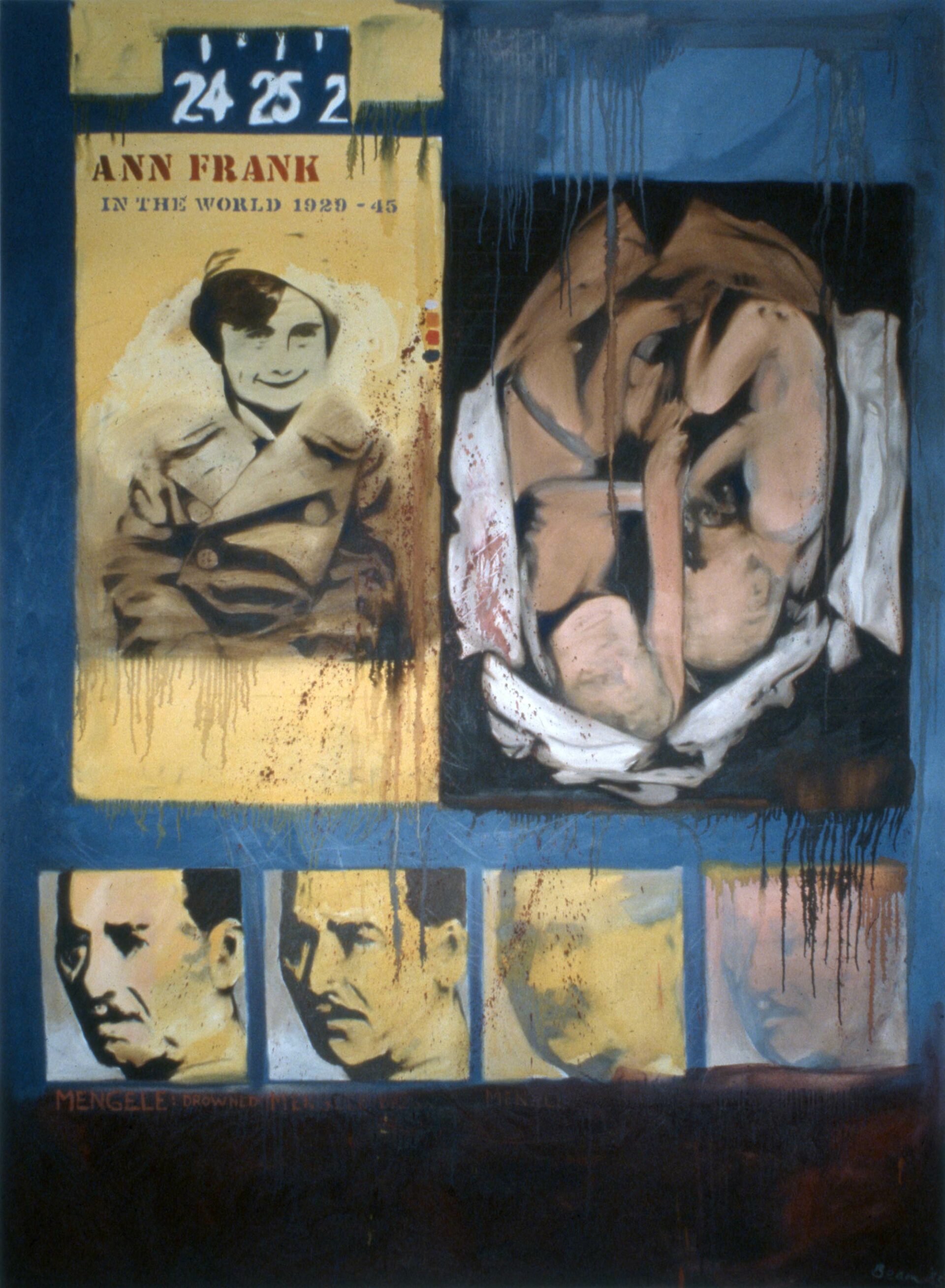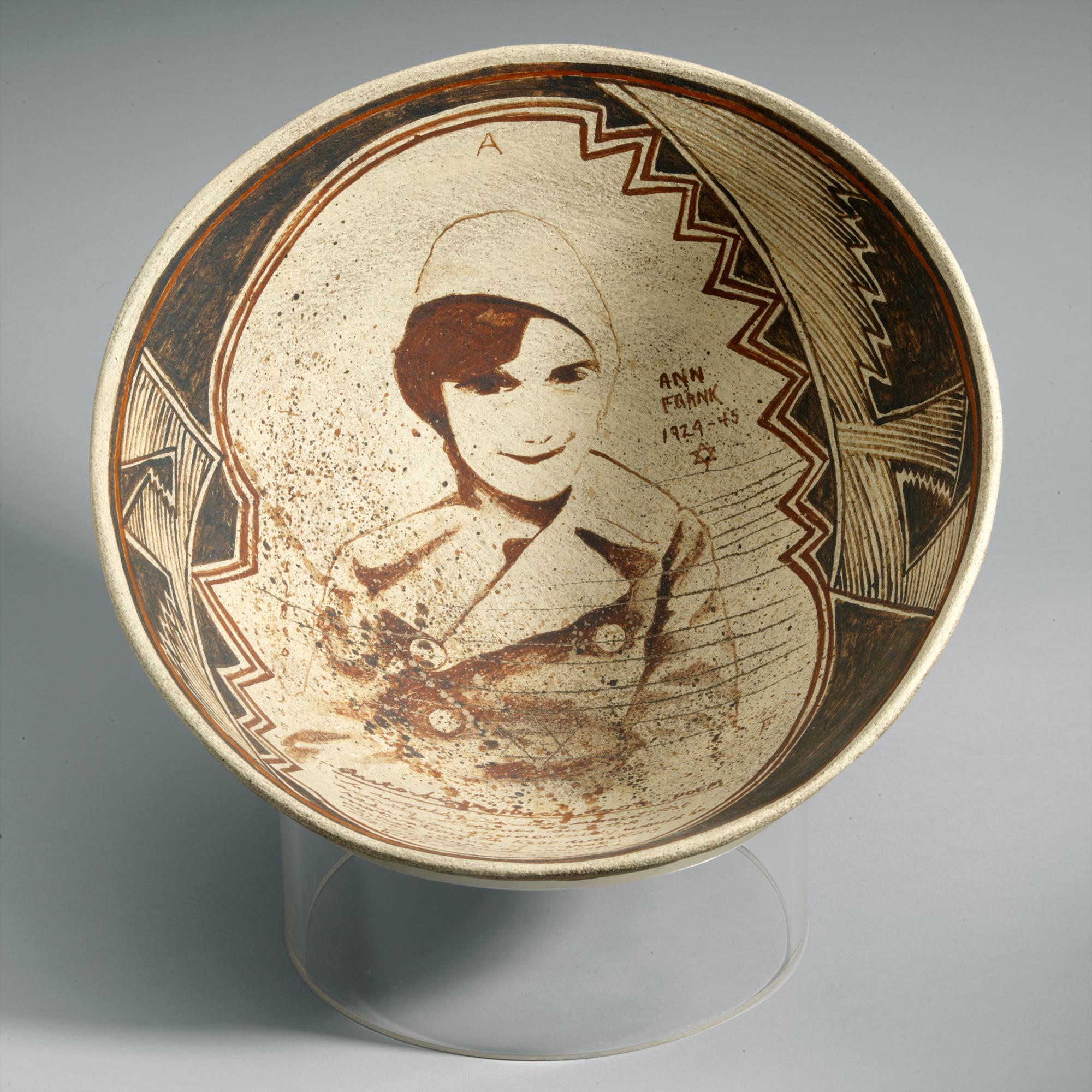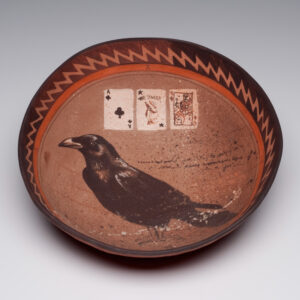Anne Frank 1 1985

Carl Beam, Anne Frank 1, 1985
Oil on canvas, 270 x 210 cm
Private collection
© Estate of Carl and Ann Beam / CARCC Ottawa 2024
Following a trip to Amsterdam in 1985, and upon reading The Diary of Anne Frank, the first-person account of the Second World War by an innocent girl who died in a Nazi concentration camp, Carl Beam began to incorporate Frank’s writings and image in a series of oil paintings, prints, and ceramic bowls. Anne Frank 1 is the most visceral of his works depicting the young girl, whose portrait (sourced from one taken in a photo booth in 1943—the year Beam was born) is juxtaposed with an image of two inverted fetuses. A picture of Nazi doctor Josef Mengele, who conducted inhumane medical experiments on prisoners at Auschwitz concentration camp, is repeated towards the bottom of the composition. The surface of the canvas is treated with red paint that resembles blood—a graphic reminder of the horrific violence of the Nazi regime.

Beam’s Anne Frank series is part of his wider critique of how Western European thought has been privileged above Indigenous thought. He found similarities to his way of thinking in Second World War Europe and the Holocaust. With his references to Anne Frank, Beam created a haunting visual language for exploring how autobiography can confront large-scale tragedies inflicted upon powerless communities by malevolent governments. Specifically, Beam saw in Frank’s story a window through which to view the abuses of Indigenous youth in Canada’s residential schools, which were still in operation at the time.
Anne Frank’s image is a heavily loaded reference to long-held traumas that have, as many scholars of the Holocaust have shown, embedded themselves within the memory of subsequent generations of Jewish people. By including Frank in his work, Beam brings these realities into conversation with Indigenous experiences. This is reinforced by a ceramic bowl that bears Frank’s image amid zigzag patterns echoing Mimbres designs. Scholar Mathilde Roza has noted that in this representation on the bowl, Beam “implies a comparison between the genocidal violence against Indigenous peoples on the one hand, and the Holocaust on the other.” But this is a difficult comparison to make, Roza argues, because “in many cultures of memory the Holocaust is seen as a ‘unique’ event in human history which has no parallel.” Beam suggests that, in fact, solidarities might be found through such uncomfortable juxtapositions.
By interpreting the Anne Frank story in his art, Beam courageously confronts the culture of silence around the institutional abuse of children at Canada’s residential schools, including his own, Garnier High School. It was a culture that held sway even among those who had been forced, or were still being forced, to attend. Beam’s Anne Frank series was an important step in the recovery process—for him and for others who had experienced similar trauma.

 About the Author
About the Author
 More Online Art Books
More Online Art Books
 Acknowledgements
Acknowledgements